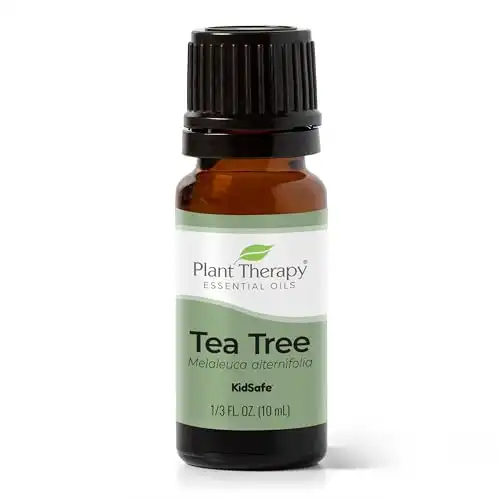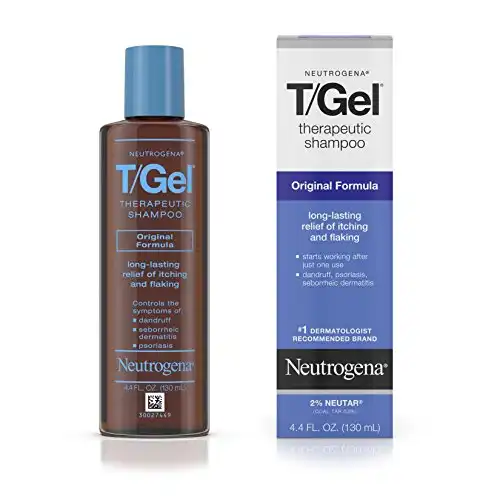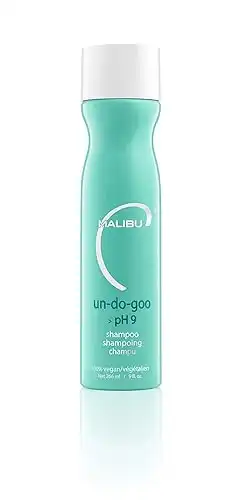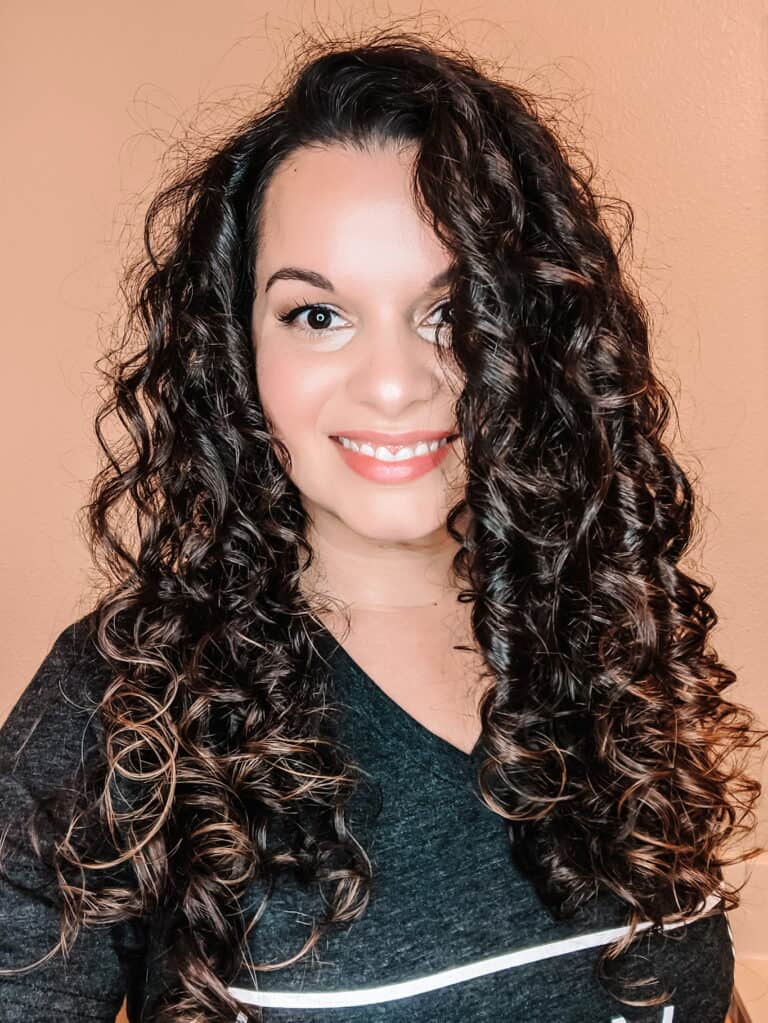How To Get Rid of Scalp Buildup: 9 Effective Ways
This post may contain affiliate links, and I will earn a commission if you purchase through these links. Please read the disclosure policy for more details.
If you’ve ever noticed your scalp flaking and your usually bouncy hair looking dull and lifeless, scalp buildup could be the culprit. This common hair problem is experienced by pretty much everyone at some point in their life, so you’ll likely notice it at some point.
The good news is that mild cases of scalp buildup are easily handled with some easy home remedies. Even better, there are simple steps that you can take to prevent the problem from developing!
This guide will tell you everything you need to know about scalp buildup, from what causes scalp buildup and how to recognize the symptoms of scalp buildup to self-care remedies you can try at home.
What Is Scalp Buildup?
Buildup on the scalp is caused by an accumulation of one or more substances, which could include your body’s own sebum and skin cells or residue from hair care products and environmental pollutants. It’s a common problem, and almost everybody will experience it occasionally.
This type of buildup is usually a minor problem that can be dealt with very easily. But leaving scalp buildup untreated can make your hair feel greasy, limp, or weighed down. If the condition becomes more severe, it can result in inflammation and infection.
So, it’s essential to pay attention to the condition of your scalp and take action quickly if you see the early signs of buildup on the scalp.

What Is Sebum Buildup?
Hyperseborrhea is the name given to a condition when your follicles produce too much sebum, the natural oil that moisturizes your scalp and hair.
The symptoms of hyperseborrhea include:
- Flaky scalp
- Itchy, red skin
- Crusty or oily skin
The sebum can also combine with dead skin cells and hair products to form a hard buildup on the scalp.
Is Scalp Buildup A Serious Condition?
Most cases of scalp buildup are mild and quickly resolved. However, if you leave it untreated, long-term sebum build up can cause scalp conditions including:
- Scalp acne
- Seborrheic dermatitis
- Pityriasis steatoides
Can Scalp Buildup Cause Hair Loss?
Untreated scalp buildup can clog your hair follicles, resulting in a condition called folliculitis. This can cause crusty sores that eventually lead to scarring and permanent hair loss.

What Does Scalp Buildup Look Like?
Scalp buildup is a white or yellow residue on your scalp that develops gradually over time, and you might not realize you have it at first. Here are some of the top symptoms of scalp buildup to look out for:
Greasy, Oily Hair: Hair that feels oily, greasy, or waxy is one of the most obvious symptoms of buildup on your scalp.
Scalp Irritation: An oily scalp can feel itchy, inflamed, or irritated.
Flakiness or Dandruff: An accumulation of hair care products, dead skin cells, and sebum can cause a dry and flaking scalp.
Brittle Hair: If your hair follicles become clogged, your strands may not receive essential nutrients and hydration. This can cause your hair to become dry, brittle, and prone to breakage.
Unpleasant Odor: If hair products, sebum, and dead skin cells accumulate on your scalp, it can harbor bacteria that can create an unpleasant odor.
Common Causes of Scalp Buildup
If you think you have scalp buildup, your first step is identifying the cause. Here are some of the most common causes of scalp buildup.
Hair product ingredients
Hair care products like shampoos, conditioners, and styling products often contain ingredients that coat the hair shaft. These can also accumulate on your scalp and cause a buildup.
Ingredients to look out for include:
- Silicones: These are used in hair care products to make your hair soft and shiny
- Sulfates: Sulfates are often used in shampoos to help create a lather. They also strip away natural oils, which can cause your scalp to increase sebum production when used too often.
- Waxes: These are often found in styling products as they provide texture and hold.
- Petroleum oil and mineral oils: These are often used in hair gels and pomades and cause a waxy buildup that can’t be removed with water.
Environmental pollutants
Environmental factors like hard water and air pollution can result in chemicals and minerals being deposited onto the surface of your scalp. These build up over time, causing irritation and clogged hair follicles.
Skin conditions
Scalp conditions like seborrheic dermatitis and scalp psoriasis can cause a dry, flaky and itchy scalp, increasing the accumulation of dead skin cells.
Poor Hair Care Habits
Leaving too long between each hair wash or not cleansing your hair well can cause a buildup of sweat, sebum, dead skin cells, and hair products. This can clog hair follicles and lead to irritation.
Excessive Sebum Production
Many factors can cause excessive sebum production (hyperseborrhea), including medical causes such as digestive problems, metabolic disorders, and hypothyroidism. Exposing your scalp to chemicals like hair colors and perms can also cause irritation and increase sebum production.
Genetics
Some people can be genetically prone to experiencing scalp buildup and will need to keep their scalp and hair healthy by cleansing more frequently.
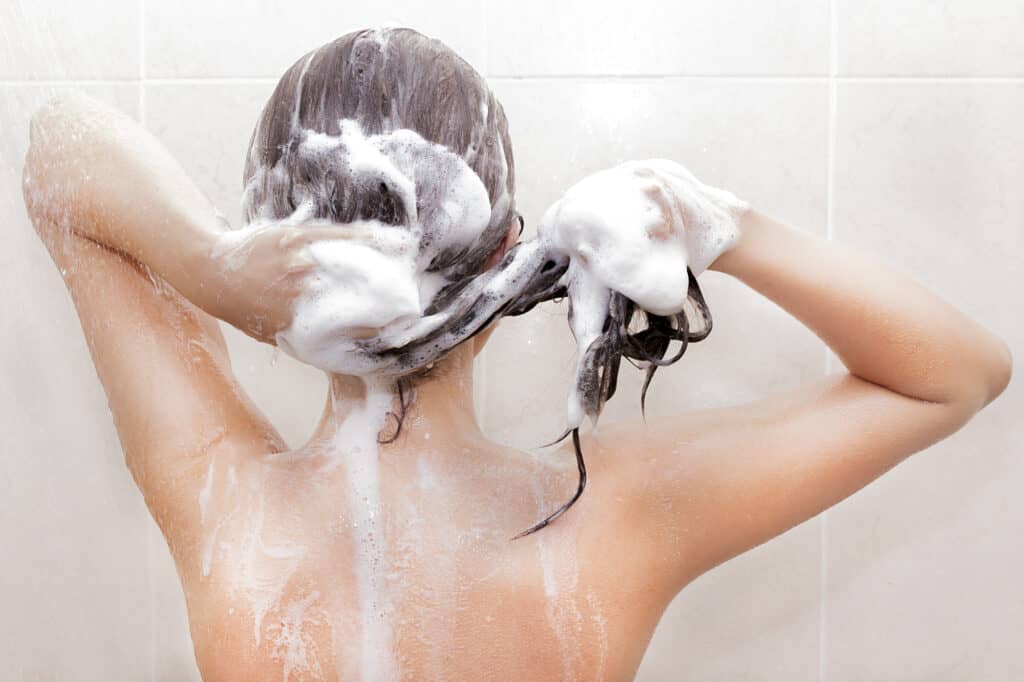
How To Get Rid of Scalp Buildup: 9 Effective Ways
Most cases of scalp buildup can be resolved at home with the right products and the right approach. It’s essential to follow the instructions carefully to avoid damaging your hair and scalp. But with these self-care methods, you can get rid of scalp buildup and restore your healthy hair.
Thorough Hair Washing
How frequently you need to wash your hair will vary depending on your hair type, but it’s always vital to cleanse it thoroughly. Make sure that you soak your hair first as it’s easier to lather up the shampoo on thoroughly wet hair.
Focus on shampooing your scalp to break down the hardened sebum or product residue, but don’t scrub your scalp or use your nails, as this may damage your hair or injure your scalp skin. Rinse your hair thoroughly with lukewarm water after shampooing and again after applying conditioner, and avoid applying conditioner to your scalp.
Clarifying Shampoo
A good clarifying shampoo is an effective way to break down any product residue that has built up on your locks. Our guide will help you choose from the best clarifying shampoos for curly hair.
If you live in a hard water area, you could try using a chelating shampoo, which will remove buildup of minerals like calcium, copper, or iron.
Clarifying and chelating shampoos will leave your hair feeling clean and manageable. However, they can also be very drying, so only use them once a month, and always follow up with a deep conditioning treatment or hair mask, avoiding your scalp.
-
Shop on Amazon$23.68 ($1.48 / Fl Oz)
We earn a commission if you make a purchase, at no additional cost to you.
03/08/2024 12:02 am GMT -
$18.99 ($2.37 / Fl Oz)Shop on Amazon Buy from MopTop
A light clarifying shampoo for all hair types.
Use code HE10 to save at MopTop.com.
We earn a commission if you make a purchase, at no additional cost to you.
03/10/2024 05:32 pm GMT -
Shop on Amazon$29.45 ($3.46 / Fl Oz)
We earn a commission if you make a purchase, at no additional cost to you.
03/08/2024 08:42 pm GMT
Scalp Exfoliation
Exfoliating your scalp with a scalp scrub or chemical exfoliant can reduce buildup and improve your scalp’s circulation. However, this is only recommended if your scalp is healthy and should be avoided if you have lice, open sores, or active scalp infections.
You can exfoliate your scalp once or twice a week with a commercial treatment or one of these homemade scrubs:
- Two tablespoons of dry oatmeal, one tablespoon of brown sugar, and enough light oil or hair conditioner to combine.
- A half cup of sea salt, one tablespoon of lemon juice, and one tablespoon of light oil to combine.
Regular brushing
Brushing your hair regularly helps keep your locks tangle-free and also spreads sebum along the entire length of your strands. Be sure to brush small sections gently, starting from the ends and working up to the roots, and always use a suitable brush for your hair type.
Apple Cider Vinegar Rinse
Although there’s no scientific proof that Apple Cider Vinegar (ACV) can reduce scalp buildup, studies suggest it has antifungal and antibacterial properties. Using an Apple Cider Vinegar rinse for curly hair could kill yeast or bacteria on your scalp that can cause dandruff or scalp folliculitis.
Tea Tree Oil
Studies have shown that tea tree oil’s antifungal and antibacterial properties can benefit people with excessive sebum or dandruff. Look for a shampoo that contains 5% tea tree oil and use it every day for four weeks to help with dandruff.
Tea tree oil can cause sensitivities, so it’s advisable to carry out a skin patch test 24 hours before using it for the first time.
Aloe Vera
Aloe vera gel is another popular natural scalp treatment with antibacterial and anti-inflammatory properties. It can help remove excess sebum and soothe an irritated scalp.
Unfortunately, some people are allergic to aloe vera, so always do a patch test before you use it. It can also interact with hydrocortisone, so avoid aloe vera if you have to use hydrocortisone. If in doubt, always check with your medical practitioner before using aloe vera.
Choose Suitable Products
Using the right shampoo and conditioner for your hair type is essential, as dry hair has very different needs than oily hair. Using the wrong ingredients could cause product buildup on your scalp or dry your scalp, which then over-compensates by producing excess sebum.
- If your hair is dry or damaged, you should avoid shampoos that contain sulfates, as they will dry your scalp and hair even more.
- However, if you have oily hair, a shampoo with sulfates could remove sebum from your scalp and hair.
- Silicones can easily build up on your scalp, so avoid hair care products containing them if you have a problem with product buildup.
- If you have sensitive skin, avoid shampoos that contain parabens or formalin.
Remember that the ingredients at the top of the ingredient lists make up the largest proportion of the product.
Consult a Dermatologist
If you’ve tried all of these methods without success, you should visit a dermatologist or trichologist (hair and scalp specialist) for expert guidance.
Best Hair Care Products To Remove Scalp Buildup
If you have product buildup on your scalp, a good clarifying shampoo will tackle the problem. If your buildup is caused by excess sebum, look for a shampoo that contains ingredients like activated charcoal, clay, or salicylic acid. These will remove sebum gently without damaging your scalp or hair.
If you have hard scalp buildup caused by scalp psoriasis or seborrheic dermatitis, a therapeutic shampoo like Neutrogena T/Sal or T/Gel would be the best option to remove your scalp buildup.
-
Shop on Amazon$52.05 ($11.83 / Fl Oz)
We earn a commission if you make a purchase, at no additional cost to you.
03/10/2024 08:57 pm GMT -
Shop on Amazon$21.90 ($2.43 / Fl Oz)
We earn a commission if you make a purchase, at no additional cost to you.
03/06/2024 07:17 pm GMT -
Shop on Amazon$21.40 ($4.28 / Fl Oz)
We earn a commission if you make a purchase, at no additional cost to you.
03/04/2024 01:47 pm GMT -
$17.00 ($1.89 / Fl Oz)Shop on Amazon
This is my top pick for clarifying all hair types. It removes buildup the best and is still gentle on curly hair.
We earn a commission if you make a purchase, at no additional cost to you.
03/04/2024 05:37 pm GMT
When To See a Doctor
Most cases of scalp buildup can be treated with self-care at home. However, severe symptoms like broken skin, sores, or hair loss could indicate an infection or serious condition like scalp psoriasis. In this case, it may be time to consult a professional.
A trichologist or dermatologist can diagnose the cause of your symptoms and provide appropriate treatment. For example, if they diagnose dandruff or scalp psoriasis, you may be recommended to use a therapeutic shampoo like Neutrogena T/Sal or T/Gel.
If you have cracked or broken skin and start to experience fever or chills, seek immediate medical attention, as this could indicate a secondary bacterial infection.
How To Prevent Scalp Buildup
Scalp buildup can be annoying, but luckily, there are several ways you can prevent scalp buildup:
Proper Hair Washing
Washing your hair regularly will remove excess sweat, oil, and dead skin cells from your scalp. But don’t wash your hair too often, as this can strip the natural oils from your scalp and cause it to produce more oil.
Our hair texture guides will help you find the right frequency for your hair type, and you can freshen up with dry shampoo between wash days.
Choose Products Carefully
Using the wrong products for your hair can cause a sebum imbalance, leading to dryness or irritation on your scalp.
Not sure what hair type you have? Our curly hair quiz will help you work it out!
Avoid Heat Styling
Hot styling tools such as blow dryers, curling irons, and flat irons can cause damage to your hair and dry your scalp. This could lead to your scalp producing more sebum to compensate for the damage, leading to buildup.
Avoid heated styling tools as much as possible, and always apply a heat protectant spray when you use them.
Avoid Environmental Damage
Damage from UV light and environmental pollutants can increase scalp buildup, but you can protect your scalp with a scarf or hat.
Avoid overuse of products
Hair care products like shampoo, conditioner, and masks or styling products like styling creams, mousse, and hairspray can quickly build up on your scalp. Use them sparingly, and try to avoid applying them to your scalp.

FAQs
Here are some of our most frequently asked questions about scalp buildup:
How Can I Differentiate Between Scalp Buildup and Scalp Infections?
Scalp buildup will look like a white or yellowish residue or flakes on your scalp. A scalp infection will result in redness, irritation, broken skin, or crusty sores on the scalp.
Which Hair Types Are More Prone To Scalp Buildup?
Fine and low porosity hair might experience product buildup if you regularly use heavier products. Curly hair might be more prone to sebum buildup, as the bends and twists in the strands make it harder for the natural oils to disperse along the strands.
Can Apple Cider Vinegar Help Treat Scalp Buildup?
Using Apple Cider Vinegar as a pre-poo treatment could help to break down your scalp buildup, making your regular cleanser even more effective.
How Often Should I Wash My Hair?
If you wash healthy hair too often, you can strip the natural oils from your scalp and hair. But if you don’t wash it enough, it could lead to buildup, so finding the right frequency is essential.
Depending on factors like your lifestyle and environment, shampooing one or two times each week could be enough for average to dry hair. On the other hand, oily hair might need cleansing every one or two days.
The Bottom Line
Scalp buildup is a common problem that can be uncomfortable and frustrating and it can leave your locks looking flat and lifeless. There are many factors that cause scalp buildup, and the early stages of buildup on your scalp can be easily dealt with using the self-care steps in this guide. However, it could lead to more serious scalp health conditions if left untreated.
You can maintain a healthy scalp by following the preventative tips in this article, and if you spot the signs of buildup, take action quickly to stop the condition from worsening. This is the best way of maintaining healthy hair and keeping your scalp looking fabulously flake-free!









